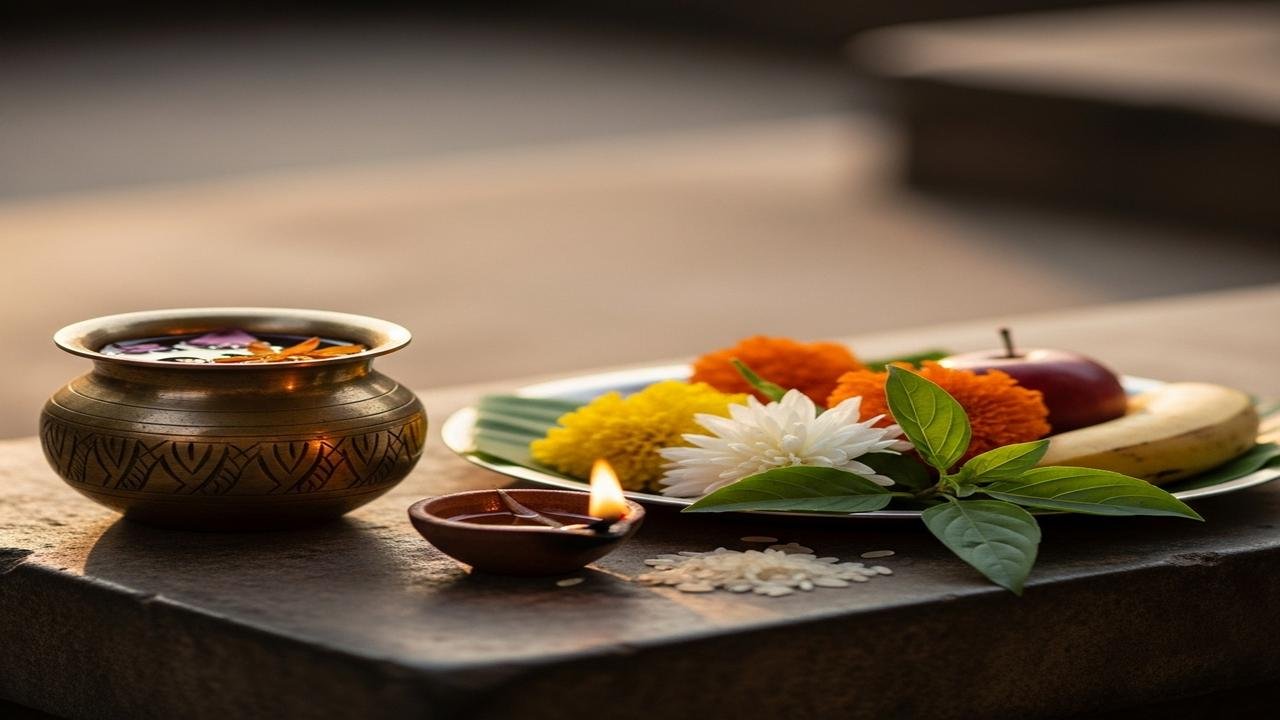Vrat: Why Somvar Monday And Guruvar Thursday Are Observed

Vrat — a short primer
Vrat — a vow or fast — has long been part of Hindu religious life. Some fasts are tied to festivals or lunar days, others to weekdays. Two very common weekday fasts are those observed on Mondays and Thursdays. Though practices vary widely by region, community and personal intention, these weekday vrats share overlapping religious, astrological and social meanings.
Why Monday?
Monday is called Somvar (from Soma — the Moon). Several strands of meaning converge around it:
- Association with Shiva and the Moon: In many Śaiva traditions, Monday is dedicated to Lord Shiva, whose iconography often includes the crescent moon. Several Puranas, including chapters in the Skanda Purana and Shiva Purana, describe the merit of observing a Monday fast (Somvar vrat) to please Shiva and obtain earthly and spiritual benefits.
- Lunar symbolism: The Moon (Soma or Chandra) governs the mind and emotions in classical Hindu thought. Fasting on Monday is sometimes practiced as a way to regulate emotions, cultivate inner calm and show devotion to the lunar principle.
- Household and marital concerns: In many communities, married women observe Somvar vrat for the welfare and longevity of their husbands. This social practice has evolved into communal rituals and storytelling that reinforce family bonds.
- Monthly rhythm: Mondays in the month of Shravan (typically July–August) are especially observed in honor of Shiva; devotees may observe multiple Mondays in that month.
Why Thursday?
Thursday is called Guruvar (day of the Guru) and is linked to the planet Jupiter (Brihaspati), the preceptor of the gods. Key reasons for Thursday vrats include:
- Guru and Brihaspati: In classical and Puranic literature Brihaspati is a teacher figure whose principle is spiritual wisdom and learning. Observing a fast on Thursday is framed as honoring one’s spiritual teacher and seeking knowledge, prosperity and good counsel.
- Vaiṣṇava and Smārta observances: Many Vaiṣṇava communities associate Thursday with Lord Vishnu or his avatars; simple Thursday vrata practices—fasting, visiting temple, lighting lamps—are common. Smārta households may combine guru- and deity-oriented elements.
- Astrological considerations: In Jyotiṣa (classical Hindu astrology), Jupiter is a benefic planet associated with growth, wealth and dharma — so a devotional act on Jupiter’s weekday is thought to attract favorable influence. Texts and regional vrata manuals often link Thursday observance to prosperity and auspicious beginnings.
Overlapping meanings
Neither weekday fast is exclusively Śaiva or Vaiṣṇava. Local traditions blend deity worship, planetary belief and social customs. For example, some households fast on Thursday specifically to honour Guru (a living spiritual teacher), while others see it primarily as a Brihaspati or Vishnu day.
How people observe these vrats
Observed forms vary from strict to symbolic. Common elements include:
- Abstaining from food (full fast) or restricting the diet (no grains, or only fruits and milk) through the day.
- Pre-dawn bathing and wearing clean or special clothing.
- Temple visits or home puja: offerings such as bel (bilva) leaves to Shiva on Mondays, yellow or saffron cloth and flowers for Vishnu or Brihaspati on Thursdays.
- Recitation of sacred names, short vrat stories, devotional songs or reading passages from Puranas and bhakti literature.
- Breaking the fast in the evening after aarti or darshan, often with family or community members.
Note: If fasting could affect your health, consult a doctor and adapt the practice (partial fasts, dietary adjustments).
Scriptural and astrological sources
Several Puranic texts contain vrata stories that describe the benefits of weekday fasts; the Skanda Purana and Shiva Purana include narratives for Somvar vrat, and Puranic material invokes Brihaspati in the context of guru-disciple and Thursday observances. Classical astrological manuals assign specific qualities to weekdays and planets (Monday—Moon; Thursday—Jupiter), which has influenced popular practice.
At the same time, philosophical texts like the Bhagavad Gītā (Gītā) and many Vedānta commentaries emphasize inner discipline, devotion and right action rather than prescription of particular weekdays. Many modern commentators stress intention (bhāva) and ethical life (dharma — duty) as central; the weekday fast becomes meaningful insofar as it cultivates devotion, restraint and care for others.
Social, psychological and cultural functions
- Rhythm and discipline: Weekly vrats give a regular point for reflection and spiritual practice within the ordinary life of work and family.
- Community and identity: Public or communal observance, storytelling and shared meals reinforce community ties and transmit tradition across generations.
- Personal meaning: For many practitioners, a vrat is a personal vow linked to gratitude, thanksgiving or a desire for a particular outcome; the act helps focus intention and moral resolve.
- Adaptation and modernity: Urban practitioners increasingly adapt fasts to health needs and schedules, turning them into short rituals at home or group satsangs rather than all-day abstinence.
Regional and sectarian differences
Practices differ by region and community. In North India, Somvar vrat for Shiva and marital welfare is widespread; in South India, Monday may be observed with distinct temple customs. Thursday observances vary from guru-worship in some traditions to Vishnu-related rites in others. Saints and regional reformers have sometimes reinterpreted vrats, emphasizing social service or inner devotion over ritual strictness.
Conclusion
Monday and Thursday vrats are multifaceted — combining deity worship, planetary symbolism, communal rhythm and personal discipline. Whether observed strictly or adapted, they offer regular opportunities for reflection, devotion and social connection. Interpretations and practices are diverse: what matters across traditions is the intention behind the vow and the ethical and devotional life it supports.
